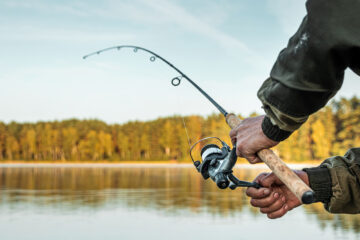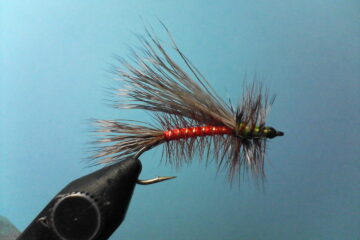Casting Like A Pro
Mastering casting techniques is essential for any angler looking to improve their fishing skills. Knowing how and when to properly cast a line can make a significant difference in catching fish. It also improves the distance and accuracy of your cast as well as the presentation of your bait or lure. Whether you are a beginner or an experienced angler, understanding different casting techniques will help you become more successful landing the big one. Within this guide, we will explore the fundamentals of mastering casting techniques and provide tips for improving your skills.
Overhead casting, side casting, and flipping or pitching are all fundamental fishing techniques that every angler should learn. Overhead casting is the most common and versatile casting technique that allows for long-distance and accuracy. Side casting is a useful technique when fishing in tight spaces or around obstacles, allowing for greater control and accuracy. Flipping or pitching is useful when fishing in dense cover or areas where distance is not as important. These techniques are all essential in different fishing situations and can improve an angler’s chances of snagging a fish. It is important for anglers to master these casting techniques to become well-rounded and successful in their fishing endeavors.
Overhead Casting Technique
Overhead casting is the most commonly used technique and is similar to the fly casting method, where the angler pulls the line off the reel with one hand while simultaneously casting the rod with the other hand.
Here are the individual steps for properly overhead casting:
- Position the rod and reel: Turn the reel so the bail faces upwards, and hold the rod in a position that’s comfortable for you.
- Open the bail: Use your non-dominant hand to open the bail by flipping it upside down.
- Hold the line: Hold the line with your index finger against the rod, making sure the line is at least 6 inches long from the tip of the rod but not more than 12 inches long, as this can affect your casting distance.
- Begin the cast: Swing the rod back behind you, then quickly and smoothly snap it forward. Release the line with your finger as the rod moves forward, allowing the momentum of the rod to carry the line out.
- Close the bail: Once the line has landed, close the bail by flipping it back into position with your non-dominant hand.
Sidearm Casting Technique
Sidearm casting involves holding the rod parallel to the ground and casting the line with a sideways flick of the wrist, which is useful for fishing under low-hanging obstacles like tree branches or docks.
The general steps for side casting include:
- Position the rod and reel: Turn the reel so the bail faces upwards, and hold the rod in a position that’s comfortable for you.
- Open the bail: Use your non-dominant hand to open the bail by flipping it upside down.
- Hold the line: Hold the line with your index finger against the rod, making sure the line is at least 6 inches long from the tip of the rod but not more than 12 inches long, as this can affect your casting distance.
- Begin the cast: Swing the rod parallel to the ground. Then quickly and smoothly snap it forward. Release the line with your finger as the rod moves forward, allowing the momentum of the rod to carry the line out.
- Close the bail: Once the line has landed, close the bail by flipping it back into position with your non-dominant hand.
To side cast, simply adjust the direction of your cast by pointing the rod to the side instead of directly in front of you. Keep in mind that the technique can vary depending on the type of fishing and the situation, so it’s important to practice and adjust as needed.
Flipping or Pitching Casting Technique
Flipping or pitching is a technique where the angler drops the bait directly into the water by pulling the line out with their hand and releasing it to drop the bait into the water without the need for casting. It’s particularly useful for fishing in tight spaces or targeting specific fish under cover
The individual steps for casting using the flipping or pitching technique with a baitcasting reel and rod:
- Let enough line out that the bait hangs about where your wrist falls at your hip.
- Hold the rod tip up at 12 o’clock, and let the bait rest in your off-hand.
- Eye your target and release the spool by pressing the thumb bar on the reel. Keep your thumb on the spool to control the speed and distance of the cast.
- Bring your rod tip down towards the target, and simultaneously release the bait by lifting your thumb off the spool.
- Once the bait hits the water, engage the reel by turning the handle to retrieve the slack line.
It is important to note that flipping and pitching require practice and precision, as they are techniques used for precision casting in tight spaces or cover. Adjusting the spool tension and brake settings on the baitcasting reel can also affect the accuracy and distance of the cast. Choosing the right reel for flipping and pitching can also improve casting performance.
It’s important to note that proper casting technique involves a combination of movements, timing, and coordination, and it may take some practice to get the hang of it. Watching a demonstration video can also be helpful.
Mastering these techniques is an essential skill for any angler looking to improve their fishing. By understanding the different techniques available and practicing them regularly, anglers can become more versatile and effective in their approach to different fishing situations. While mastering casting can take time and practice, the rewards of a successful cast and a great catch make it all worth it. So keep practicing, keep learning, and keep casting with confidence. Happy fishing!



1 Comment
Charles Humphreys · April 30, 2023 at 2:37 PM
Good post. I learn something totally new.